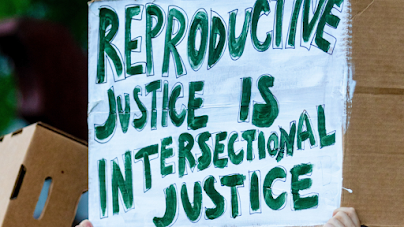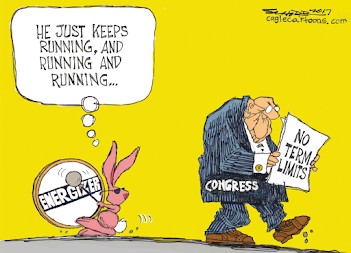Gender, Sex, and Roe
By JT Thomas
Yikes. Just yikes.
Between the mass shootings, rising Covid cases, and a Supreme Court that’s gone completely cuckoo-for-Cocoa-Puffs, I think we can all agree that it’s been one hell of a month.
While a lot of things are going to absolute shit at the moment, the thing that’s been getting the most attention is, of course, the Supreme Court’s decision in Dobbs v. Jackson, which toppled Roe v. Wade and ended nearly fifty years of the constitutional right to an abortion along with it.
I saw a video recently of a certain Senator getting into an argument with Dr. Khiara Bridges over the use of more gender inclusive terminology in the reproductive rights movement. The crux of the argument was that this Senator believed using inclusive terminology like “birth-giver” to be ridiculous because only women can give birth, despite being told by Dr. Bridges repeatedly that this is not true.
For a sizable chunk of Western history, and the vast majority of specifically American history, sex and gender have been very stratified, binary categories in our society. Very often, they’re assumed to be one and the same, which is what I think our friend the Senator was doing. It’s frustrating, because we do need to start using and thinking in more inclusive terms that break down those binaries in every aspect of our lives, but very often that inclusive terminology and those using it get pushback, like Dr. Bridges did.
Hence this blog post. As someone who has done a lot of research and taken several courses on sex and gender (both in the ancient and modern worlds) in the last year, I’m wanted to use this space to provide an explanation for sex and gender based in actual queer theory.
First, we need to define the two. Sex can be defined as the physical traits that people express that are often (but not always) reproductive in nature. Gender on the other hand is seen by many (perhaps most notably by renowned gender theorist Judith Butler) as a performance, the expressions and behaviors we exhibit on a day-to-day basis. This includes things like how we dress, how we style our hair, and the roles we play in society. Traditionally (in non-Native practices in the US, at least) our gender performance has been based on and guided by our sex, though this has been changing for years now.
So sex and gender are two different yet very closely related things. A similarity that they share is that neither is binary (i.e. one of two possible options) or fixed (i.e. unchangeable).
Sex may seem to be binary at first; people very often assume that other people either have a penis or a vagina. However, just a quick Google search will show the existence of people who are intersex, or who exhibit a combination of stereotypically male and stereotypically female traits. Genetically, XX and XY chromosomes are not the only two combinations. Even if we do accept that a penis and a vagina are the only options, there’s so much variation in the shape, size, and color of the physical traits expressed. Every human is unique, and therefore there are billions upon billions of possibilities, therefore making it impossible to force sex into a binary
Gender follows that same rule. As Butler says, gender is something you do. It’s a performance, and if everyone performs in their own unique way, it’s physically impossible for binaries to exist naturally. If one does, we’ve manufactured it as a society. This doesn’t mean that a man-made binary isn’t real or doesn’t hold any power. It just means that we shouldn’t assume that it’s natural law.
Neither sex nor gender are fixed, either. Expressions and behaviors change over time and in response to new ideas or other stimuli. Sex is much more stable, but even it can be changed; sex reassignment surgeries exist to help people feel that their sex matches their gender, and are performed regularly.
This brings us back to the Senator.
As we’ve already covered, anyone who performs and lives as a man in their daily life is a man if they choose to be, regardless of their internal plumbing. A pregnancy does nothing to negate that performance. Therefore, someone who performs the identity of a man and therefore is a man can get pregnant if they have the right parts. The same holds true for nonbinary, genderfluid, and other genderqueer folks. On the flip side of the same coin, as Dr. Bridges pointed out, many women can’t become pregnant. A variety of factors is at play once again: gender performance vs. internal plumbing, fertility issues, etc.
The bottom line is that the question of who gets to own the abortion rights movement is not so black and white. In fact, it shouldn’t be a question at all; no matter how you split it up, by gender, race, or class, a multitude of groups are going to be directly affected by the Dobbs ruling. That being said, using inclusionary language can be hard. Sometimes we forget. I myself am guilty of that. However, like Dr. Bridges says, we can talk about a certain group being affected while also recognizing that they’re not alone. As long as we’re inclusive and intersectional in our intent, we’ll be just fine.




Comments
Post a Comment